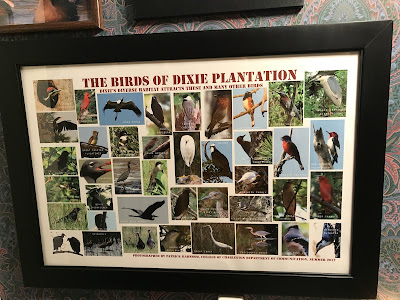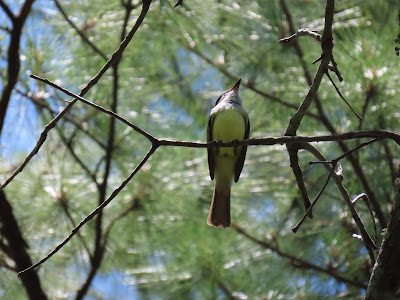I’m no expert at recognizing bird calls but my “birdar” (bird radar) does ping when I hear an unfamiliar one.
For weeks outside my house, I had noticed a high-pitched song from above. Every time I looked to see what was making the sound but could not spot the source. At one point I was able to take a photograph but it wasn’t very good or clear so I was unable to identify it.
But then I struck gold! About three weeks ago around 6:30 p.m. the vocal and the view converged. On my driveway, I stood and took several pictures of the mysterious visitor.
I like this capture showing fanned tail feathers. When I examined my photos on a large screen inside I realized this was not a lifer for me.
This bird has a distinctive look with its yellow breast colors, brown head, and tail feathers.
I needed only to walk to our downstairs powder room to recognize (see below) that this is a…drum roll…Great crested Flycatcher.
All About Birds describes this species as large "with a broad-shouldered and big-headed look...Great Crested Flycatchers are sit-and-wait predators, sallying from high perches (usually near the tops of trees) after large insects, returning to the same or a nearby perch. Their clear, rising reep calls are a very common sound in summer."
This is my “Birds of Dixie Plantation” canvas print. Dixie Plantation is a property owned by the College of Charleston along the Stono River and Intracoastal Waterway near Hollywood, S.C. In the 2012 summer, I hiked Dixie’s trails several times and took photographs of more than 30 types of birds. It was here I saw and captured my first Painted Bunting.
Here I also photographed my first Great crested Flycatcher.
By the way, several years ago the name Dixie Plantation was changed to Stono Preserve (ie political correctness).
See my post from 2015 about this special place.
This is the hoot I took around April 21 of the Yellow crested Flycatcher. Glad I got better ones a few weeks later!








No comments:
Post a Comment